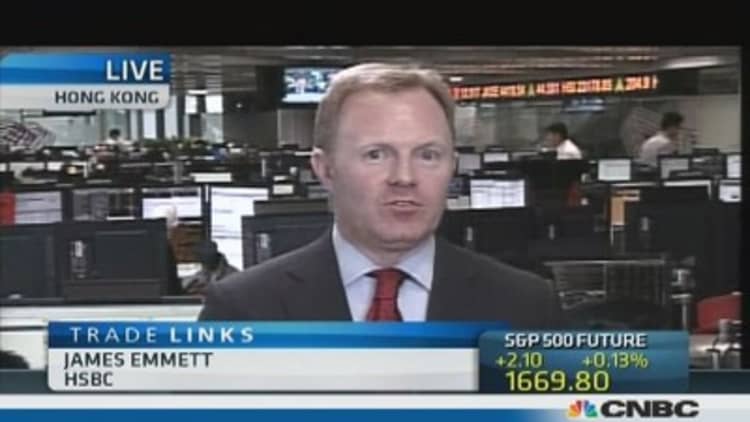Private equity and hedge fund firms are heralding a bright future for infrastructure investing given crumbling pipes, ports and power plants, low interest rates and broke governments.
"The financing shortage right now is staggering around the world," said Andrew Hohns, a managing director at $10 billion hedge and private equity credit firm Mariner Investment Group, during an infrastructure investing conference hosted by the New York Society of Security Analysts Friday in Manhattan.
Hohns noted that average annual project finance debt issuance is between $205 billion and $370 billion a year, while the need is between $2.8 trillion to $3 trillion annually until 2030, according to the World Bank, the World Economic Forum and other international organizations.
(Read more: Governments 'plug funding gap' in major projects)

Big money managers had no shortage of ideas on how to fill the gap left by diminished bank and government financing of large infrastructure projects.
Fortress Investment Group, the $58 billion publicly traded hedge and private equity firm, touted big opportunities in railroads and ports, for example.
"We think it's a very, very attractive investment, very viable, and makes money," Joseph Adams, head of the transportation and infrastructure in Fortress' private equity arm, said of the opportunity in building railroads at the same event Friday.
Fortress owns Florida East Coast Industries, which is building a regional passenger train operation from Orlando to Miami called All Aboard Florida. Adams said the business—the first privately owned train service since Amtrak started in 1971—will generate an estimated $350 million in revenue when it's completed in a few years.
Generally, Adams said Fortress targets 15 percent to 25 percent investor rates of return in its funds, usually a two to three times multiple for the initial investment.
Adams also spoke about the opportunity in ports.
"The port space is something that up until the last four or five years has been largely neglected in the United States. You look around the world and people realize ports are the gateway to exports and imports to a much, much greater degree," Adams said. "It's a big opportunity in this country and I think one that really is not properly financed or understood."
(Read more: Private equity's growing play: Africa)
Faster trading hedge funds are also looking at infrastructure.
Kingdon Capital Management, the $2.4 billion hedge fund firm, said the most interesting U.S. infrastructure investment opportunity was in oil field services sector.
"Its had a rough couple of years as their customers saw the price of natural gas collapse on them. It was way oversupplied--(liquefied natural gas) and power plants take a long time to build," Peter McNally, a senior energy analyst at Kingdon and former portfolio manager at Galleon Group, said at the NYSSA event.
"The industry is maturing and figuring out what to do downstream," McNally said. "Drilling is poised to accelerate next year. Cash flows have been stronger in North America. Natural gas prices are higher this year than last year. Year-to-date realized oil prices are $3 higher. So we're looking more at companies that provide services to producers."
McNally didn't give specific companies to bet on, but noted that Houston-based Plains GP Holdings was the largest initial public offering this year, even ahead of Twitter.
For others, the infrastructure opportunity is abroad.
Pradeep Ramamurthy, a director at $7.5 billion developing markets-focused private equity firm Abraaj Group, highlighted emerging markets as practically begging for investment, especially in the energy sector.
"Ninety percent of infrastructure demand in the energy and power space over the next 20 years is going to come from emerging markets," Ramamurthy said.
(Read more: The emerging market with big returns)
"We're seeing a lot of opportunity in the renewable energy space--that's less a function of environmental desire there than the need to drive down the cost of energy generation in the long term," Ramamurthy added. He noted opportunities with wind energy in India, hydroelectricity in Peru and nuclear power in China—along with general power opportunities in Africa.
So far, infrastructure has been a good investment idea, at least for public stocks. The S&P Global Infrastructure Index, which includes 75 companies from around the world, is up 9.39 percent this year.
—By CNBC's Lawrence Delevingne. Follow him on Twitter @ldelevingne.






